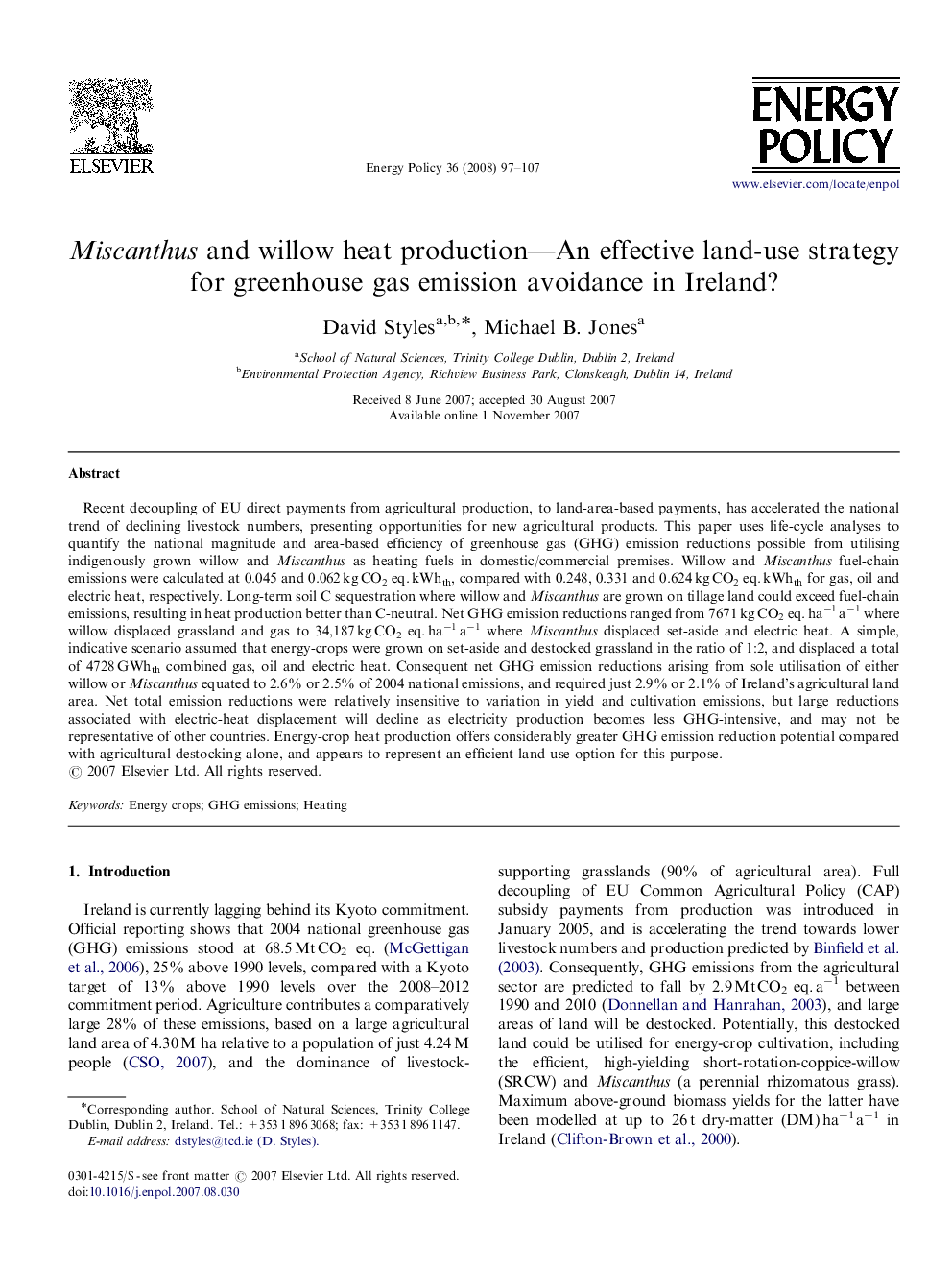| کد مقاله | کد نشریه | سال انتشار | مقاله انگلیسی | نسخه تمام متن |
|---|---|---|---|---|
| 996473 | 936301 | 2008 | 11 صفحه PDF | دانلود رایگان |

Recent decoupling of EU direct payments from agricultural production, to land-area-based payments, has accelerated the national trend of declining livestock numbers, presenting opportunities for new agricultural products. This paper uses life-cycle analyses to quantify the national magnitude and area-based efficiency of greenhouse gas (GHG) emission reductions possible from utilising indigenously grown willow and Miscanthus as heating fuels in domestic/commercial premises. Willow and Miscanthus fuel-chain emissions were calculated at 0.045 and 0.062 kg CO2 eq. kWhth, compared with 0.248, 0.331 and 0.624 kg CO2 eq. kWhth for gas, oil and electric heat, respectively. Long-term soil C sequestration where willow and Miscanthus are grown on tillage land could exceed fuel-chain emissions, resulting in heat production better than C-neutral. Net GHG emission reductions ranged from 7671 kg CO2 eq. ha−1 a−1 where willow displaced grassland and gas to 34,187 kg CO2 eq. ha−1 a−1 where Miscanthus displaced set-aside and electric heat. A simple, indicative scenario assumed that energy-crops were grown on set-aside and destocked grassland in the ratio of 1:2, and displaced a total of 4728 GWhth combined gas, oil and electric heat. Consequent net GHG emission reductions arising from sole utilisation of either willow or Miscanthus equated to 2.6% or 2.5% of 2004 national emissions, and required just 2.9% or 2.1% of Ireland's agricultural land area. Net total emission reductions were relatively insensitive to variation in yield and cultivation emissions, but large reductions associated with electric-heat displacement will decline as electricity production becomes less GHG-intensive, and may not be representative of other countries. Energy-crop heat production offers considerably greater GHG emission reduction potential compared with agricultural destocking alone, and appears to represent an efficient land-use option for this purpose.
Journal: Energy Policy - Volume 36, Issue 1, January 2008, Pages 97–107